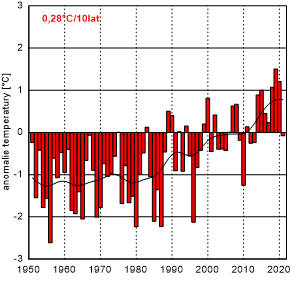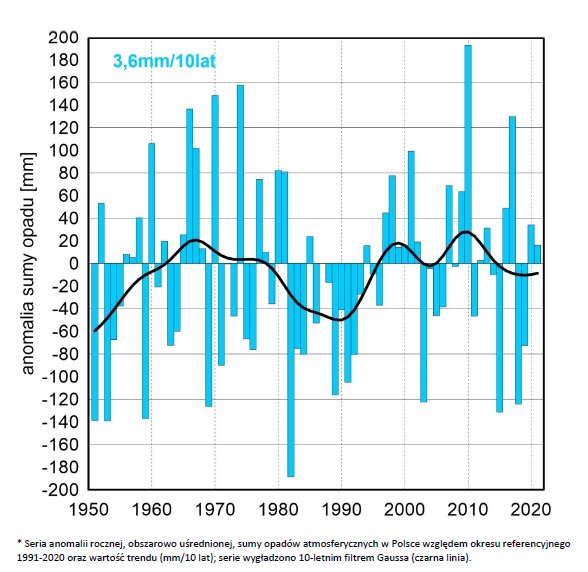Unprecedented European winter warmth over the weekend
ASPartOfMe
Veteran

Joined: 25 Aug 2013
Age: 67
Gender: Male
Posts: 36,797
Location: Long Island, New York
Thousands of records shattered in historic winter warm spell in Europe
On New Year’s Day, at least seven countries saw their warmest January weather on record as temperatures surged to springtime levels: Latvia hit 52 degrees (11.1 Celsius); Denmark 54.7 degrees (12.6 Celsius); Lithuania 58.3 degrees (14.6 Celsius); Belarus 61.5 degrees (16.4 Celsius); the Netherlands 62.4 degrees (16.9 Celsius); Poland 66.2 degrees (19.0 Celsius); and the Czech Republic 67.3 degrees (19.6 Celsius).
Those who track worldwide weather records described the warm spell as historic and could hardly believe its scope and magnitude.
Maximiliano Herrera, a climatologist who tracks global weather extremes, called the event “totally insane” and “absolute madness” in text messages to the Capital Weather Gang. He wrote that some of the high nighttime temperatures observed were uncommon in midsummer.
It’s “the most extreme event ever seen in European climatology,” Herrera wrote. “Nothing stands close to this.”
Guillaume Séchet, a broadcast meteorologist in France, agreed, tweeting that Sunday was one of the most incredible days in Europe’s climate history.
“The intensity and extent of warmth in Europe right now is hard to comprehend,” tweeted Scott Duncan, a meteorologist based in London.
Here are some of the most impressive records that were set in Europe on New Year’s Day:
In Poland, it was so warm that the January national high-temperature record was broken before sunrise. The town of Glucholazy was 65.7 degrees at 4 a.m., which is warmer than its average low temperature in midsummer. Temperatures rose further as the day progressed.
Bilbao, Spain, reached 77.2 degrees (25.1 Celsius), its hottest January day.
Trois-Ville, France, reached 76.8 degrees (24.9 Celsius), a record for the month. It was among more than 100 records set across the country Sunday, including 75.2 degrees (24.0 Celsius) in Dax, and 65.5 degrees (18.6 Celsius) at stations with data dating to the 1800s in Besançon and Châteauroux.
Ohlsbach, Germany, reached 66.9 degrees (19.4 Celsius) for a monthly record and the highest temperature of the day in Germany. Other locations, including Berlin at 60.8 degrees (16 Celsius), also set January records. Berlin was among the places that set records both New Year’s Eve and New Year’s Day.
Warsaw’s high of 66.2 degrees (19 Celsius) demolished the its previous January record by 9.2 degrees (5.1 Celsius).
While the most extreme temperatures occurred on New Year’s Day, exceptionally mild weather began on New Year’s Eve.
Scores of calendar day and monthly records fell on Saturday, surpassing marks set just a year before in many instances.
The Czech Republic’s weather service tweeted that the country posted its warmest New Year’s Eve on record. Prague, with 247 years of measurements, set a new monthly maximum of 63.9 degrees (17.7 Celsius).
Here are some of the more significant temperature records set Saturday:
France saw impressive record values such as a high of 76.6 degrees (24.8 Celsius) in Verdun. The country as a whole saw its warmest New Year’s Eve.
Six of nine federal states in mountainous Austria saw their warmest Dec. 31 on record. Temperatures were as warm as 64.9 degrees (18.3 Celsius) in Aspach.
Luxembourg set a December record for the country with 64.0 degrees (17.8 Celsius) in Wormeldange. Belgium reached a December record high of 63.5 degrees (17.5 Celsius) at Diepenbeek.
Bad Neuenahr-Ahrweiler bested Germany’s highest December minimum as it only dipped to 59.5 degrees (15.3 Celsius).
Monday marked the third day of widespread high temperatures previously unheard of in midwinter. Many more monthly and daily records were set in the eastern half of Europe, particularly in Germany, Hungary, Romania and Russia.
_________________
Professionally Identified and joined WP August 26, 2013
DSM 5: Autism Spectrum Disorder, DSM IV: Aspergers Moderate Severity
“My autism is not a superpower. It also isn’t some kind of god-forsaken, endless fountain of suffering inflicted on my family. It’s just part of who I am as a person”. - Sara Luterman
goldfish21
Veteran

Joined: 17 Feb 2013
Age: 42
Gender: Male
Posts: 22,612
Location: Vancouver, BC, Canada
No such fanfare for this a few months ago....
"Extreme cold records continue to tumble at the South Pole. Three recent days – November 16th, 17th and 18th – have recorded a daily record, with the 18th plunging to –45.2°C, compared with –44.7°C on the same day in 1987. The records follow the six-month winter of 2020-21, which was the coldest since records began in 1957."
Inexplicably, all these facts and trends have escaped reporting in the mainstream media. The excuse might be that it is just weather, and temperatures have always moved up and down. But the excuse doesn’t seem to apply to the July 19th U.K. high of 40.3°C at RAF Coningsby, recorded at the side of the runway used by after-burning Typhoon jets. This record high has barely been out of the Net Zero headlines ever since."
"Curious."
Actually the data shows extremes throughtout Australia
> normal wetness in some regions = floods
> normal dryness in some regions = drought
> normal temperature in some regions = heatwaves
I think you know this if you read the data from BOM and rely less on Sky news.
Based on paleoclimatology, globally warm periods tend to have roughly the same temperatures in tropics (rain patterns may change). Ice caps in the poles melt getting temperate climate and currently temperate latitudes get 10-15 Celsius warmer. That's what most of Mesosoic looked like.
Poland has a tendency to crazy weather fluctuations but recently, it shifted, expecially winters. Previously typical winter was alternating freezing temperatures and clear sky (East wind) and milder temperatures, clouds and snow (West wind), sometimes interrupted by freezing, cloudy North wind or warm South wind melting everything.
Recently, patterns of winter shifted. While snow and frost spells still happen, there is way, way more wind. Winter storms started to occur, something previously unheard of. "No winters" - winters with neither snow nor frost at all - became a thing.
I used to think, with the natural fluctuations of weather in Poland, a global warming of 3 Celsius would be invisible here. I was wrong.
_________________
Let's not confuse being normal with being mentally healthy.
<not moderating PPR stuff concerning East Europe>
Based on paleoclimatology, globally warm periods tend to have roughly the same temperatures in tropics (rain patterns may change). Ice caps in the poles melt getting temperate climate and currently temperate latitudes get 10-15 Celsius warmer. That's what most of Mesosoic looked like.
Poland has a tendency to crazy weather fluctuations but recently, it shifted, expecially winters. Previously typical winter was alternating freezing temperatures and clear sky (East wind) and milder temperatures, clouds and snow (West wind), sometimes interrupted by freezing, cloudy North wind or warm South wind melting everything.
Recently, patterns of winter shifted. While snow and frost spells still happen, there is way, way more wind. Winter storms started to occur, something previously unheard of. "No winters" - winters with neither snow nor frost at all - became a thing.
I used to think, with the natural fluctuations of weather in Poland, a global warming of 3 Celsius would be invisible here. I was wrong.
How much has it warmed, and in what timeframe?
Locally or globally?
Locally, mean annual temperatures:

In the same time frame, no significant anomalies in mean annual precipitation:

Source: https://www.imgw.pl/wydarzenia/imgw-pib ... yczna-2021
You can see how the climate naturally fluctuates a lot - yet the trend in temperature is clear even with all these fluctuations.
_________________
Let's not confuse being normal with being mentally healthy.
<not moderating PPR stuff concerning East Europe>
Locally or globally?
Locally, mean annual temperatures:

In the same time frame, no significant anomalies in mean annual precipitation:

Source: https://www.imgw.pl/wydarzenia/imgw-pib ... yczna-2021
You can see how the climate naturally fluctuates a lot - yet the trend in temperature is clear even with all these fluctuations.
Dipoles and solar flares seem to have an impact on temperature and rain here in Oz.
La Nina is reportedly the reason for our mild summer this year so far.
Comment, plz.
La Nina is reportedly the reason for our mild summer this year so far.
Comment, plz.
Temperature:

Precipitation:

https://tradingeconomics.com/australia/precipitation
_________________
Let's not confuse being normal with being mentally healthy.
<not moderating PPR stuff concerning East Europe>
By the way, I explored various countries and temperature for Philippines:

_________________
Let's not confuse being normal with being mentally healthy.
<not moderating PPR stuff concerning East Europe>
| Similar Topics | |
|---|---|
| Winter generators |
Yesterday, 12:48 pm |
| Dry and itchy skin in the winter |
09 Feb 2025, 12:19 pm |
| It's Winter and viruses are running around |
10 Feb 2025, 4:12 pm |






